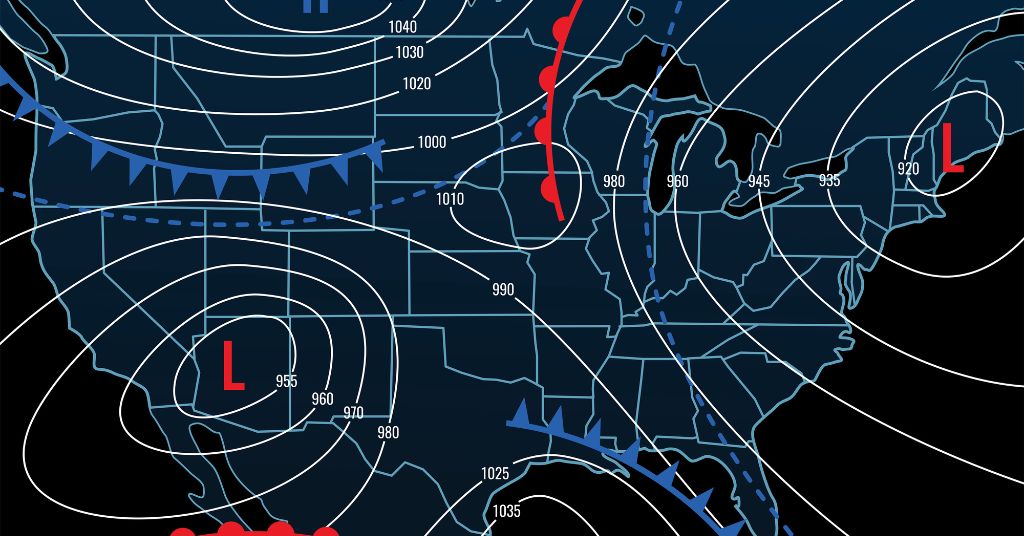Collecting weather data for a planned flight must begin before the normal pre-departure briefing. It can be helpful to begin paying attention to TV weather broadcasts a day or two before your flight to understand where high and low-pressure areas will be, as well as the location and movement of fronts. Understanding anticipated weather patterns is the foundation for all other weather produced.
Collecting data early on will also allow you to compare forecasts with the actual weather that follows to evaluate the accuracy of the forecasts. Obviously, in stable weather conditions, forecasts will be more accurate than in unstable conditions. Because of this, you will need to pay more attention and seek additional updates during times of fast-moving fronts and other changing weather conditions.
Pay particular attention to weather trends as well. Is the trend for improving weather or deteriorating weather? Simply knowing this will help you collect the weather data you need. As you begin to collect weather data, it is good to start with the online resources of 1-800-WXBRIEF. Having this information in front of you for more in-depth study will prove to be more valuable than initially talking to a briefer and trying to write down what they say. The best time to talk to a briefer is during the pre-departure weather brief. By this time, you should already have a good idea of the weather and be able to ask questions to fill in the blanks.
There are three types of weather briefings you can request when talking to an FSS briefer: a standard briefing, an abbreviated briefing, or an outlook briefing. A standard brief is designed for flights that are due to depart within six hours and are tailored to your route of flight. An abbreviated brief is appropriate when you do not need a full briefing but are looking for an update on what you previously obtained. An outlook brief is appropriate when your departure is more than six hours from the time of the briefing.
Your interaction with the briefer should consist both of listening to what is being said, as well as asking questions concerning the weather that you might encounter. A weather briefing should not be one-sided and consist of you listening to what the briefer has to say and just saying “thank you” when they are done. As the pilot in command of your aircraft, it is your responsibility to obtain all needed weather information and make go-no-go decisions. This responsibility cannot be transferred to the briefer.
While talking to the briefer, make sure you ask for the most recent PIREPS. They are often the only source for the actual occurrence of turbulence, cloud layer heights, the actual icing conditions, etc. Pay attention to when and where the reports were actually made.
Another important area you will need to understand is in which direction and how far you will have to go to encounter better weather if your current situation begins to deteriorate. If your concern is convective activity, it will be important to know what kind of convective activity exists. Are there air mass thunderstorms en route or is it frontal activity? Knowing this will make a difference in what to do to avoid possible thunderstorms. If you will be in VMC, airmass thunderstorms can be dealt with by the ”see and avoid” principle. Avoiding frontal thunderstorms is trickier and requires more information. Talking to an FSS briefer while en route will be helpful, but don’t expect them to make decisions for you.
If your en route concern is icing, it is important to know temperatures aloft. Structural Icing usually occurs in a relatively narrow range of temperatures, most likely between 0 and -10 degrees C. Climbing to a higher, colder altitude may be best as long as you know you can descend to your destination without encountering icing. Knowing if the surface temperatures will be above freezing can give you confidence in knowing that if you inadvertently pick up any ice, it will be shed before landing.
The point to keep in mind is to know what likely weather problems you might encounter and to develop a strategy for dealing with them before you depart. Just as it is important to stay ahead of the airplane when flying, it is equally important to stay ahead of weather situations while flying cross country.
Gathering weather information should not stop once the flight begins. If what you see outside the cockpit window does not match what you were expecting, it is time to contact FSS to see what has changed and what can be expected. While getting this update, you should provide your own PIREP to help other pilots who may be along your route of flight.
Obtaining the most helpful weather briefings takes planning and thought, but the payoff and peace of mind that it provides will always be worth the investment.










